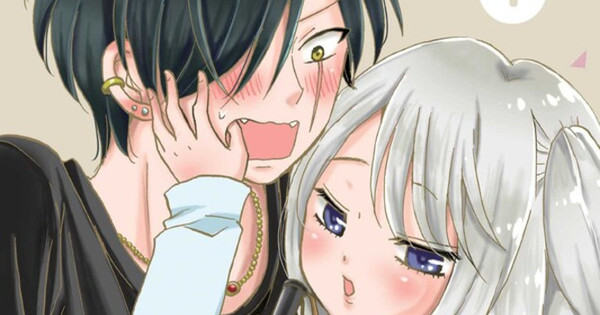Curated From www.animenewsnetwork.com Check Them Out For More Content.
“If you don’t cram yourself into highly specific roles, society doesn’t treat you like a person.”
Those words, thought by male lead Morio Kurokawa, nicely sum up the point of this book. Morio’s an eighteen-year-old high school dropout with a face that scares people and no job (the two are related) when he meets Yukiko Akaza, a sixteen-year-old high school second-year who is legally blind. They first encounter each other when she rams her cane into his butt when he’s standing on the tactile paving blocking her way, and the fact that she’s not afraid of him touches his heart because he is just a big mush. And for his part, Morio doesn’t think that there’s anything wrong with Yukiko – she’s a fully capable human being; it’s just that most people only see her disability and nothing beyond that. Thus begins a fluffy little romance replete with very solid messaging about how everyone deserves to be treated with respect.
There is one obvious risk this series runs, and that’s using Yukiko for inspiration porn. “Inspiration porn” is a term adjacent to the dreaded manic pixie dream girl – it describes a style of storytelling that casts a disabled person as somehow inspiring to an able-bodied person by showing how they overcome obstacles. It frames living with a disability as somehow less than, and calling it problematic is understating the matter. Love in Sight certainly skirts the line a few times, and there’s a good chance this will be a “your mileage may vary” series. From my position (invisible disabilities and a parent with visible disabilities), this volume doesn’t cross that line, partly by acknowledging that the line exists in the first place. Mostly this is down to two elements of the story: Yukiko’s older sister Izumi and Morio’s visit to a video rental store. The latter scene is at greater risk of veering into dangerous territory, although it is framed much more about inclusivity and accessibility than anything else.
Morio, who has recently gone to the movies with Yukiko and learned about adaptive technology like audio descriptions and the fact that reading white text on black is easier for the visually impaired (Yukiko is legally blind but has some sight), is aghast when he pops into a video store on impulse and finds it only has a self-checkout. He immediately takes the clerk to task, who brushes him off with statements about how blind people don’t watch movies. Eventually, he gets through to the store manager when the manager’s elderly grandmother turns out to also benefit from accommodations. It’s framed as ensuring everyone has access and dignity, and it works pretty well.
Izumi, Yukiko’s older sister, is the more personal, individualized form of learning. Since her apartment and college are closer to Yukiko’s high school, Yukiko lives with her sister, and she’s beginning to chafe under her sister’s fears. Unlike Morio, who always listens and adapts to Yukiko while treating her like a person, Izumi is terrified that her sister will be hurt or have difficulties in life. At one point, Yukiko calls her out, telling her that “you just see a cloud of your fears,” which hits Izumi hard. She contrasts with Morio, who tries to smooth the way as he would for anyone because she’s so caught up in what she thinks she must do. There’s also a hint that she’s worked herself into a bit of caregiver burnout, a genuine thing that takes a significant toll on people.
For all of this serious discussion, at its core, Love’s in Sight! is also a fluffy little rom-com, and it does that part well. Morio is known as “Mori the Black Panther” because of his exploits in delinquency, and he’s just tickled that Yukiko immediately sees through his act to the sweet, lonely kid underneath. Yukiko is a classic tsundere, and both are practically giddy that they’ve found someone who sees them for themselves. The story also works in a lot of nice details of adaptive technology, allowing things like tactile pavement and step nosing to appear in the plot without it feeling like a learning experience. Morio and Yukiko both have positive impacts on each other, and that’s what I like to see in a romance.
In the afterword, creator Uoyama says that part of the goal of this manga was to let people know that everyone’s just a person. That comes across clearly, from how the video store overlooks the elderly as a major customer base to Izumi’s fears holding Yukiko back to the uncomplicated romance plot. There’s also a strong flavor of learning to acknowledge other perspectives, such as when an old woman tells Morio that his facial scar doesn’t even register for her because she grew up during WWII and knew plenty of people with scars. There are also some amusing details in the translation, such as how Morio’s “sparkle” sound effects are written as “spar kill” and the decision to localize the title rather than just translating it (Yanki-kun to Hakujo Girl identifies Yukiko by her cane, which isn’t great) was a solid one. Overall, this is a good book, and if it skirts too close to the line a few times, I think it may get more right than wrong as it gets its feet more firmly underneath it.

